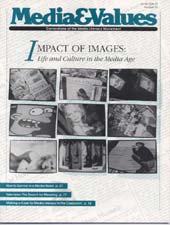Pictures in the Parlor
|
This article originally appeared in Issue# 57
|
If traditional culture defined a world where only the wealthy had access to beautiful color pictures--oil paintings--the proliferation of advertising images put, for the first time, colorful works of art in the hands of the masses. Today color lithography is everywhere and appears pedestrian, yet to its first recipients it bore tremendous symbolic power. For people schooled by an historic scarcity of images, the appearance of chromolithography seemed revolutionary.
It made the symbolic accoutrements of wealth available to everyone, free of charge. Frederick Douglass, for example, saw chromolithographs as part of the exodus from slavery to freedom: "Heretofore, colored Americans have thought little of adorning their parlors with pictures. . . Pictures come not with slavery and oppression and destitution, but with liberty, fair play, leisure and refinement. These conditions are now possible to colored American citizens, and I think the walls of their houses will soon begin to bear evidence of their altered relations to the people about them."
— Stuart Ewen, Advertising and the Development of Consumer Society



